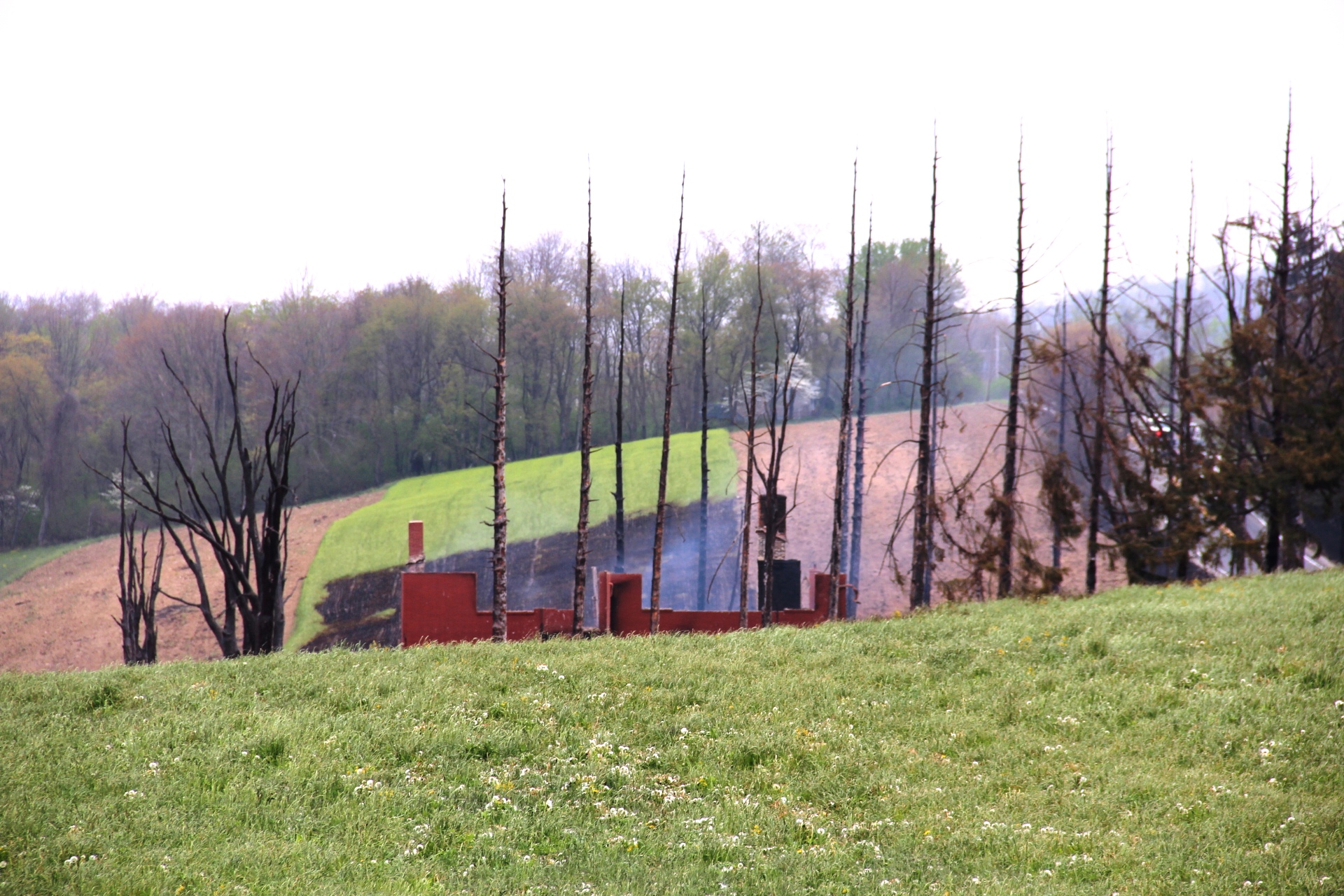In 2012, Spectra Energy inspectors saw it: a patch of corrosion that had eaten away at a 30-inch pipeline in Salem Township, Pennsylvania. But company officials said Tuesday that they didn’t replace the pipe because they didn’t expect the “anomaly” they saw to grow so quickly. A subsequent investigation of the stretch of the Texas Eastern pipeline revealed that the corrosion grew five times faster than what the company expected. Spectra officials are still trying to figure out why.
That pipeline exploded beneath a field about 30 miles east of Pittsburgh on April 29, 2016—badly burning one man and damaging several houses. Andy Drake, vice president of operations for the Houston-based company, says the corrosion was revealed during a 2012 inside-the-pipeline inspection. It showed a 30 percent decrease in the thickness of the pipeline’s wall.
“It was very small. It was smaller than any threshold we would have been required to [take] action on or investigate,” Drake says. “The anomaly grew at a significantly higher rate than anything we’ve seen in the past.”
LISTEN: Inspectors Saw Corrosion on Pipeline Years Before Explosion
Spectra officials shared their insights into the blast at a public meeting at a Salem Township church. Based on research and guidelines developed by the pipeline industry, Drake says the company expected the corrosion to grow at a rate of two to three percent a year.
“What we saw was upwards of 10 to 15 percent a year,” Drake says.
Drake says the type of tape used on the line, the high temperature gas coming from a nearby compressor station, or some other local condition are all possible causes for the unexpected level of corrosion.
The explosion ripped a 12-foot crater in the ground, burned a half-mile wide section of the surrounding field, and threw a 25-foot section of the steel pipeline 100 feet from the blast site. At the time of the explosion, James Baker was in his house, a few hundred feet away. He was badly burned; his home, destroyed.
Carol Webb, Baker’s aunt, attended Tuesday’s hearing. She expressed anger over the fact that the company had seen the corrosion but did not do anything about it—and about the explosion’s lasting impacts on the life of her 27-year-old nephew.
“I’m having a hard time trying to wrap my head around this,” Webb said. “If you check those pipelines—and if they’re off even one point—shouldn’t they be replaced? These pipelines are running through peoples’ back yards.”
“The bottom line is he will never be the same again,” Webb said, referring to her nephew. “Why can’t people be the number one priority when you’re running these gas lines, when you’re running through these communities?” Webb asked Drake.
“There are no words that I can possibly even give you that can explain how sorry we are about what’s happened here,” Drake responded. “The models we were using were based on tons and tons of research and data. And they thought those models were conservative. Now, we’ve got a new piece of information that’s telling us ‘We have to learn,'” he said.
“I’m having a hard time trying to wrap my head around this. If you check those pipelines—and if they’re off even one point—shouldn’t they be replaced? These pipelines are running through peoples’ back yards.”
The federal Pipeline Hazardous Material Safety Administration (PHMSA) has been investigating the blast since it occurred. Its investigation is ongoing. PHMSA inspector Michael Yazemboski says Spectra followed industry standards when it made the decision to leave the pipeline in the ground in 2012.
“The corrosion they found in 2012 wasn’t severe enough to warrant repair, based on industry repair criteria,” Yazemboski says.
Tom Wooden, vice president of field operations at Spectra, says the company has inspected over 400 places along the Texas Eastern running from Pennsylvania to New Jersey to look for similar corrosion. He says no other pipe sections had the same “aggressive corrosion environment and contributing factors that we had near the incident site.”
Wooden says that the company would keep the rest of the line from Delmont, Pennsylvania to Lambertville, New Jersey running at 80 percent capacity while it investigates.



